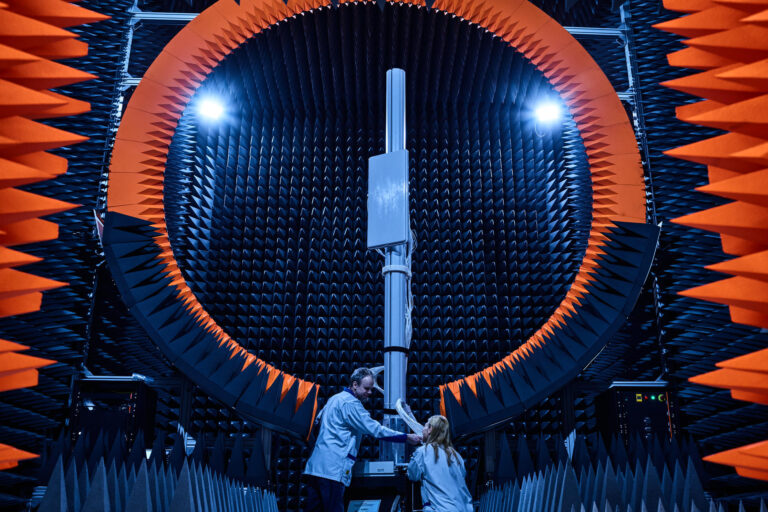
With more than half the global population currently having access to the internet, and an expected growth in connectivity to over 5.3 billion users by 2023, networks worldwide are experiencing ever-increasing amounts of data traffic. As the adoption of IoT, 5G, cloud services and Wi-Fi 6 increases, the pressure on these networks is set to mount, making next-generation solutions that offer the high-quality performance and cost effectiveness that enterprises need crucial.
For organisations looking to meet evolving service demands and offer outstanding network performance, Optical LAN is the answer. Allowing businesses across a wide range of verticals to improve capacity and performance across their networks in a cost-effective manner, this technology will enable enterprise networks to meet the needs of a vast number of users at all times – without compromising on the performance.
A real urgency for change
The growing adoption of cloud computing and the rise of digital transformation is allowing businesses to access applications and data via the internet without the need for additional software or programs downloaded onto a computer or mobile device. Although a game-changer in terms of increased efficiency and transformation of business processes, cloud services are playing havoc in current enterprise networks creating bottlenecks due to the increased levels of data and applications in networks that were not designed to handle them.

This, alongside the expansion of IoT, 5G and Wi-Fi 6 are creating additional challenges for these legacy networks. According to IoT Business, these technologies will generate 79 Zettabytes of data globally by 2025, highlighting the need for increased bandwidth. Again, traditional infrastructure will struggle to provide this and for the first time in history wireless speeds will match wired speeds, straining the entire network.
Enterprise networks must also overcome the need for high-quality, low-latency connectivity essential for video. With rising user demand for 4K and high-definition footage growing in popularity, businesses need to ensure that their networks are reliable enough to provide the streaming and other usage applications such as surveillance and control systems necessary.
Moving from copper to fibre
Highspeed services such as mass downloading of files or software updates are reshaping business practices across all industry sectors – while their motivations may differ, many enterprises face similar
network challenges. Most businesses operate using traditional networks, however with the rise in data traffic and capacity requirements driven by these new trends, networks must be adapted to support high bandwidth services.
The days of utilising traditional copper cabling for internet access are nearing their end. In an application with Cat6 cables, speeds of 10Gbps can be reached with a 55-meter distance. Even with the newer Cat8 cabling, the limitations of copper can clearly be seen as speeds of 10Gbps and 25Gbps are restricted to a reach of up to 30 metres.
In a traditional copper-based Local Area Network (LAN) architecture, devices in the core layer connect to the distribution layer switches and then down to the access layer switches at the communication closets. Copper cables then link the closets to the end-user devices. Whereas an Optical LAN changes the fundamental set up by replacing the copper cables with fibre optics, becoming an all-fibre connection with only a small number of copper cables connected to the endpoints.
Optical LAN is the way forward
It is worth considering alternatives that can deliver better value. Optical LAN is ideally suited and offers more value for less investment. Delivering gigabit, multi gigabit and 10 gigabit speeds and protecting sensitive data with built-in, military-grade security features, an Optical LAN can address the evolving service demands and offers high-quality network performance through its high-capacity capabilities. It not only improves efficiency but also enhances the end-user experience. It reduces operating costs by using equipment that requires less power, cooling, and maintenance.
The Optical LAN equipment also uses much less space and covers 200x more area than with traditional network equipment. Single mode fiber (SMF) cables are more resistant and longer lasting than copper cables and also offer unlimited bandwidth potential.
Value for business
As previously mentioned, Optical LAN offers a variety of advantages for enterprise networks and creates much-needed value for money during a competitive time for businesses. It not only provides the required bandwidth and high-quality performance needed by end-users now but can be adapted over time to fit in with changing business requirements and the evolution of technology and devices.
The Optical LAN technology converges all services onto a single infrastructure, eliminating the need for multiple platforms while providing high-speed services to all users. Voice, video, video conferencing, wireless access and monitoring services such as building automation systems, security cameras and building sensors are all supported with Optical LAN. It also allows different generations of PON technology to be combined on a single fiber serving old and new technologies simultaneously.
There is no need to change the head-end equipment and fiber cabling infrastructure, significantly reducing CAPEX and upgrade time. As daily life changes with sensors and devices connecting with and becoming part of information systems and user applications, an unlimited and connected environment is being created.
Optical LAN is ready to support any new application that may come along, enabling enough capacity through the infrastructure to address the data demands for years to come. When the time comes for more capacity, a next-generation network upgrade will be easy and cost-efficient with minimal changes to electronics and no impact on the installed fiber distribution network.
Alongside the bandwidth advantages, Optical LAN is a proven, highly secure technology. It eliminates mid-span switching equipment entirely, reducing the number of vulnerable access points to which negligent or malicious users can have access. The Optical Network Terminal does not store configuration or user information and requires no local management access. With low human touch operations, the network is far less susceptible to human error. This adds another valuable layer of security not possible with traditional networks.
Looking ahead
Today, businesses of all types have an unprecedented opportunity to benefit from innovative communications technologies. These technologies offer rich new devices and applications, fast connections, and mobility that allows users to be more productive. However, a fast, reliable, and cost-efficient infrastructure remains an essential enabler. By upgrading to fiber-based network technology such as Optical LAN, businesses will be well positioned to enable and benefit from new communications technologies for years to come whilst supporting the current requirements of end-users.

Shrinivas Joshi
Business Lead for Enterprise Solutions at Nokia Fixed Networks


